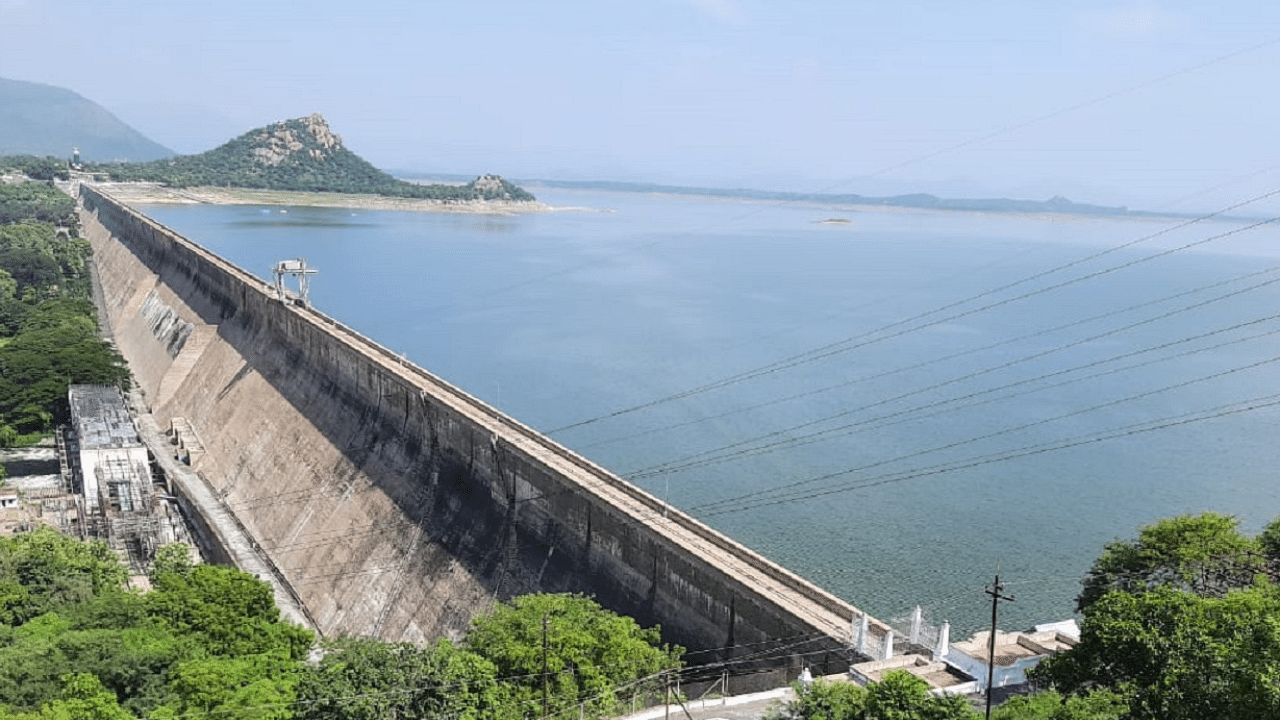
The water level at the 88-year-old Stanley Reservoir in Mettur, the lifeline of lakhs of farmers in the Cauvery Delta region, stood at 103 feet against the Full Reservoir Level (FRL) of 120 feet on Tuesday, thanks to the release of water from dams in Karnataka which is being pounded by monsoon rains.
The inflow at Biligundlu, the entry point of Cauvery water from Karnataka to Tamil Nadu, stood at around 1.10 lakh cusecs on Tuesday, up from around 45,000 cusecs on Monday. The huge increase in the inflow is attributed to the release of huge quantities of water from Kabini and Krishnaraja Sagar dams in Karnataka.
At Mettur, the inflow at 8 pm on Tuesday was 95,515 cusecs while the water level stood at 103.070 feet as against the FRL of 120 feet. If the inflow remains at 1 lakh cusecs for a few days, the dam is expected to reach the FRL very soon. The water storage at 8 pm on Tuesday was 68.878 tmcft and the outflow was 15,000 cusecs, which is likely to be increased by Wednesday.
With the inflow increasing to 1 lakh at Biligundlu, a warning has been issued to people living in low-lying areas. The water level at Mettur dam increasing is good news for the farmers in the Cauvery Delta who have cultivated the kuruvai (short-term crop) for the third straight year in a row. This year, the dam was opened in May for the first time since independence.
While paddy was cultivated in a record 4.9 lakh acres in 2021, the early release of water will help farmers increase the cultivation to 5.22 lakh acre this year, the government says, adding that water from Mettur dam is the lifeline of farmers in Thanjavur, Tiruvarur, Nagapattinam, Mayiladuthurai, and parts of Pudukkottai, Tiruchirapalli, and Cuddalore.
Besides cultivating lakhs of land, water from lower Cauvery is also used for drinking water purposes in 18 districts. It also benefits around 30 industries.
The Cauvery Delta, which was used to a three-crop formula – samba, kuruvai and thaladi – had come down to just one crop a year. Till about a decade ago, cultivation would take place in three seasons — Kuruvai (short-term crop) from June to September, Samba (long-term crop) from August to January and Thaladi from January to May — keeping the farmer busy for the whole year.
While the first two seasons primarily cultivated paddy, farmers utilised the third season to cultivate pulses for centuries together with the progressive farming community.